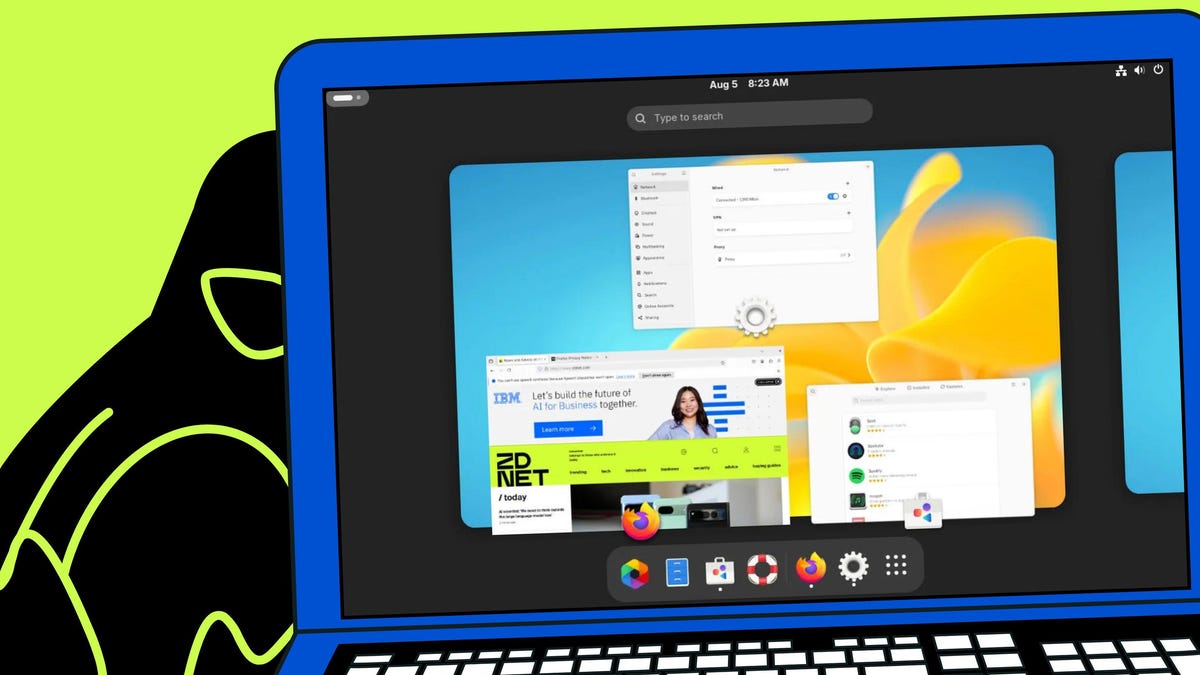ZDNET’s key takeaways
- Immutable Linux distributions are the future.
- There are several reasons why immutable is the way to go.
- From security to predictability, you can’t go wrong with immutable.
Get more in-depth ZDNET tech coverage: Add us as a preferred Google source on Chrome and Chromium browsers.
Immutable Linux distributions sound complicated, right?
You’d be surprised to know that it’s actually quite simple. Essentially, an immutable distribution is one that has certain crucial directories set in read-only mode so they can’t be changed. If you want a more in-depth look at what an immutable Linux distribution is, make sure to read all about them in this piece by my esteemed colleague, Steven Vaughan-Nichols.
Also: 6 most Windows-like Linux distros because old habits die hard
The most important thing you need to know about them is the read-only component. Now that you have a very basic idea of what an immutable distribution is, what are the reasons why you should use one?
1. Improved security
This is the single most important aspect of immutable distributions. Because the core of the system is mounted in read-only mode, it cannot be changed. With the core system locked down as read-only, it’s not possible to change settings in directories like /etc, /boot, /dev, /proc, or other critical locations. That means if you wound up with malware on your system, it wouldn’t be able to alter the contents of those directories.
Also: 5 Linux distros I recommend to help businesses cut costs and boost security
That also means those who are new to Linux won’t be able to make the same kind of mistakes they might make on a non-immutable distribution (as in editing the /etc/fstab file in such a way that renders the system unbootable).
Immutable distributions lock down an already secure operating system.
2. Better reliability
In a similar vein to security, immutability makes Linux even more reliable. That’s saying something, given how reliable Linux already is. With the core system locked down, changes cannot be made that would cause the system to become unreliable. On top of that, you’re limited to the methods of installing applications. Immutable systems rely heavily on Flatpak because the universal installer sandboxes an installed application, such that it cannot easily modify anything within the core system.
Also: My 10 favorite Linux distributions of all time, ranked
Because of this, immutable distributions are more reliable than non-immutable. Even better, if you accidentally break something, it will most likely be fixed during the next reboot. On top of that, third-party applications can’t change anything that would result in an unstable OS.
3. Atomic updates
Atomic updates are quite different from standard updates. Instead of the OS treating an update on a package-by-package basis, it’s an all-or-none situation. In other words, if an update to a single package would break something, the update will not happen and the system rolls back to the previous working state.
Also: You can try Linux without ditching Windows first – here’s how
Even during the update, the system creates a new image on a separate partition and the updates happen there (instead of on your main partition), while you’re using the machine. When you next reboot your system, the updates are applied. Again, if anything within that update would break something, it all rolls back to your previous state.
4. Simplified maintenance
Because of the simplified (and more reliable) upgrade process, fewer dependency issues, and the ability to maintain a working system state, immutable distribution maintenance is far easier than with standard distributions.
Also: The best Linux distros for beginners in 2025 make switching from MacOS or Windows so easy
Another benefit to immutable maintenance is that, thanks to the focus on containerized applications, you don’t have to worry about apps interfering with one another, so it’s less likely to have issues where one application overwrites another, locks a library, or interferes with the startup of another app or, gasp, the OS itself.
5. Reproducibility
With an immutable system, you are always guaranteed to have a bootable system. The updates for an immutable system have been well-tested by the developers, which means the updates are easily reproducible. There’s a certain level of comfort, knowing that updates are reproducible and reliable. On a non-immutable system, reproducibility is not always guaranteed. If something breaks, you can’t count on the system to produce a running image that can be applied when things go wrong.
Also: The 6 best Linux distros for students – from elementary to college
If you’re curious about immutable distributions, consider one of the following:
